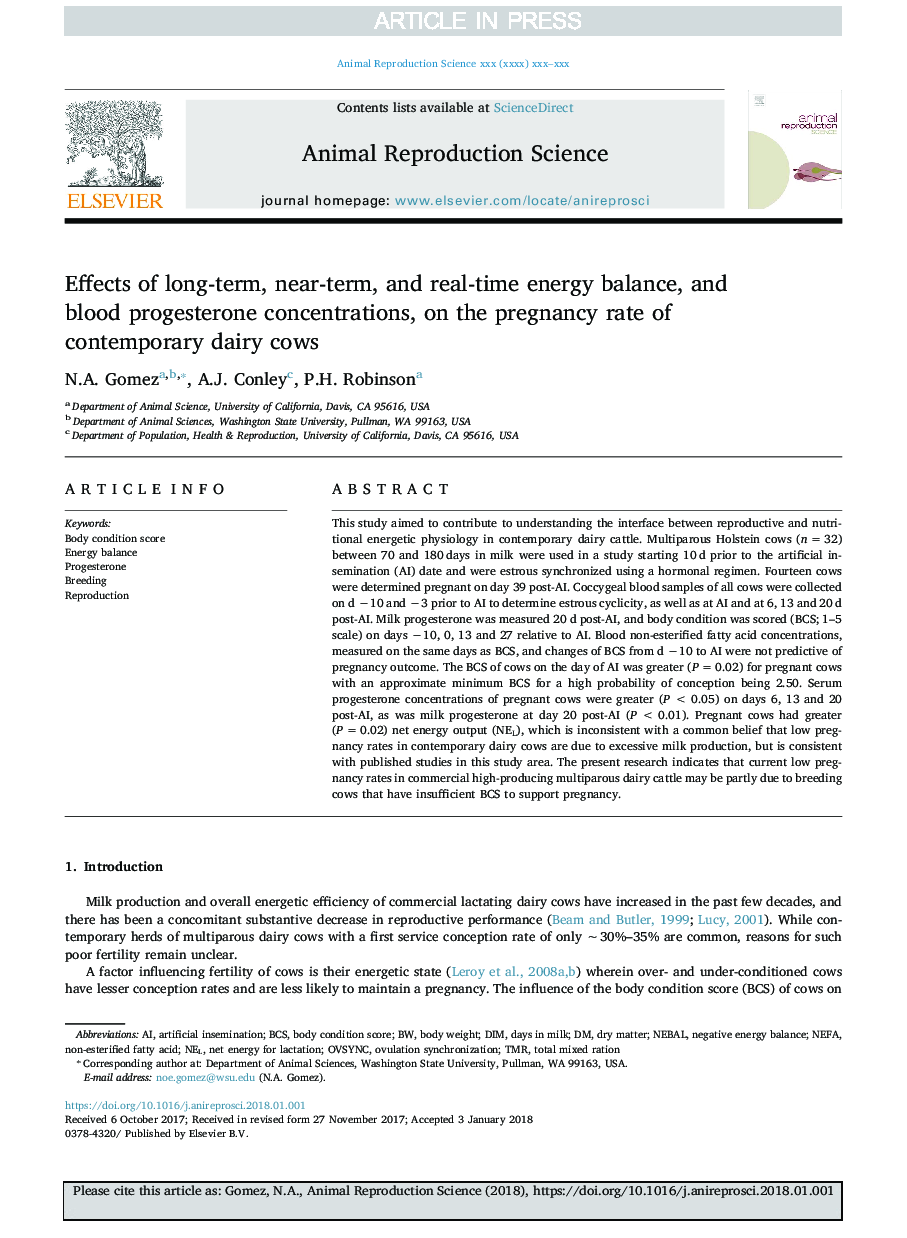| کد مقاله | کد نشریه | سال انتشار | مقاله انگلیسی | نسخه تمام متن |
|---|---|---|---|---|
| 8404073 | 1544688 | 2018 | 10 صفحه PDF | دانلود رایگان |
عنوان انگلیسی مقاله ISI
Effects of long-term, near-term, and real-time energy balance, and blood progesterone concentrations, on the pregnancy rate of contemporary dairy cows
ترجمه فارسی عنوان
اثرات تعادل انرژی درازمدت، درازمدت و زمان واقعی و غلظت پروژسترون خون بر میزان بارداری گاوهای شیرده معاصر
دانلود مقاله + سفارش ترجمه
دانلود مقاله ISI انگلیسی
رایگان برای ایرانیان
کلمات کلیدی
TMRNEFADIM - اذعانNon-esterified fatty acid - اسید چرب غیر استرادیلیBreeding - اصلاح نژادnet energy for lactation - انرژی خالص برای شیردهیEnergy balance - تعادل انرژیNegative energy balance - تعادل انرژی منفیReproduction - تولید مثل یا زادآوریNEL - درArtificial insemination - درونکاشت مصنوعیdays in milk - روز در شیرBCs - روند BCsdry matter - ماده خشکBody condition score - نمره وضعیت بدنOvulation synchronization - همزمان سازی تخمک گذاریbody weight - وزن بدنProgesterone - پروژسترونtotal mixed ration - کل جیره مخلوط شده
موضوعات مرتبط
علوم زیستی و بیوفناوری
علوم کشاورزی و بیولوژیک
علوم دامی و جانورشناسی
چکیده انگلیسی
This study aimed to contribute to understanding the interface between reproductive and nutritional energetic physiology in contemporary dairy cattle. Multiparous Holstein cows (nâ¯=â¯32) between 70 and 180â¯days in milk were used in a study starting 10â¯d prior to the artificial insemination (AI) date and were estrous synchronized using a hormonal regimen. Fourteen cows were determined pregnant on day 39 post-AI. Coccygeal blood samples of all cows were collected on d â10 and â3 prior to AI to determine estrous cyclicity, as well as at AI and at 6, 13 and 20â¯d post-AI. Milk progesterone was measured 20 d post-AI, and body condition was scored (BCS; 1-5 scale) on days â10, 0, 13 and 27 relative to AI. Blood non-esterified fatty acid concentrations, measured on the same days as BCS, and changes of BCS from d â10 to AI were not predictive of pregnancy outcome. The BCS of cows on the day of AI was greater (Pâ¯=â¯0.02) for pregnant cows with an approximate minimum BCS for a high probability of conception being 2.50. Serum progesterone concentrations of pregnant cows were greater (Pâ¯<â¯0.05) on days 6, 13 and 20 post-AI, as was milk progesterone at day 20 post-AI (Pâ¯<â¯0.01). Pregnant cows had greater (Pâ¯=â¯0.02) net energy output (NEL), which is inconsistent with a common belief that low pregnancy rates in contemporary dairy cows are due to excessive milk production, but is consistent with published studies in this study area. The present research indicates that current low pregnancy rates in commercial high-producing multiparous dairy cattle may be partly due to breeding cows that have insufficient BCS to support pregnancy.
ناشر
Database: Elsevier - ScienceDirect (ساینس دایرکت)
Journal: Animal Reproduction Science - Volume 189, February 2018, Pages 136-145
Journal: Animal Reproduction Science - Volume 189, February 2018, Pages 136-145
نویسندگان
N.A. Gomez, A.J. Conley, P.H. Robinson,
